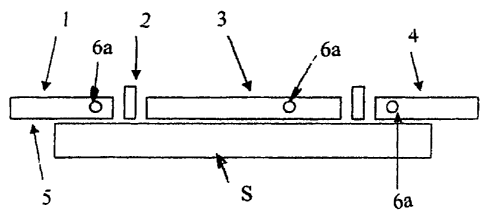Some of the information on this Web page has been provided by external sources. The Government of Canada is not responsible for the accuracy, reliability or currency of the information supplied by external sources. Users wishing to rely upon this information should consult directly with the source of the information. Content provided by external sources is not subject to official languages, privacy and accessibility requirements.
Any discrepancies in the text and image of the Claims and Abstract are due to differing posting times. Text of the Claims and Abstract are posted:
| (12) Patent: | (11) CA 2540403 |
|---|---|
| (54) English Title: | METHOD AND DEVICE FOR DE-ICING OF TRAINS |
| (54) French Title: | METHODE ET DISPOSITIF DE DEGIVRAGE DES TRAINS |
| Status: | Granted |
| (51) International Patent Classification (IPC): |
|
|---|---|
| (72) Inventors : |
|
| (73) Owners : |
|
| (71) Applicants : |
|
| (74) Agent: | NORTON ROSE FULBRIGHT CANADA LLP/S.E.N.C.R.L., S.R.L. |
| (74) Associate agent: | |
| (45) Issued: | 2014-01-21 |
| (22) Filed Date: | 2006-03-20 |
| (41) Open to Public Inspection: | 2007-09-20 |
| Examination requested: | 2011-03-10 |
| Availability of licence: | N/A |
| (25) Language of filing: | English |
| Patent Cooperation Treaty (PCT): | No |
|---|
| (30) Application Priority Data: | None |
|---|
Method and device for de-icing of trains in which a treatment medium is sprayed against the underside of units in the train such as locomotive and carriages in order to remove ice which has been built up in the base frames of the units. As treatment medium heated glycol is used.
Une méthode et un dispositif de dégivrage des trains dans lequel un composé de traitement est vaporisé sur la surface inférieure des unités du train, telles que les locomotives et wagons, pour retirer le givre accumulé sur les châssis de base des unités. Le glycol chauffé est un composé de traitement utilisé.
Note: Claims are shown in the official language in which they were submitted.
Note: Descriptions are shown in the official language in which they were submitted.

For a clearer understanding of the status of the application/patent presented on this page, the site Disclaimer , as well as the definitions for Patent , Administrative Status , Maintenance Fee and Payment History should be consulted.
| Title | Date |
|---|---|
| Forecasted Issue Date | 2014-01-21 |
| (22) Filed | 2006-03-20 |
| (41) Open to Public Inspection | 2007-09-20 |
| Examination Requested | 2011-03-10 |
| (45) Issued | 2014-01-21 |
There is no abandonment history.
Last Payment of $624.00 was received on 2024-02-26
Upcoming maintenance fee amounts
| Description | Date | Amount |
|---|---|---|
| Next Payment if standard fee | 2025-03-20 | $624.00 |
| Next Payment if small entity fee | 2025-03-20 | $253.00 |
Note : If the full payment has not been received on or before the date indicated, a further fee may be required which may be one of the following
Patent fees are adjusted on the 1st of January every year. The amounts above are the current amounts if received by December 31 of the current year.
Please refer to the CIPO
Patent Fees
web page to see all current fee amounts.
Note: Records showing the ownership history in alphabetical order.
| Current Owners on Record |
|---|
| NORDIC GROUND SUPPORT EQUIPMENT IP AB |
| Past Owners on Record |
|---|
| JEMT, THOMAS |